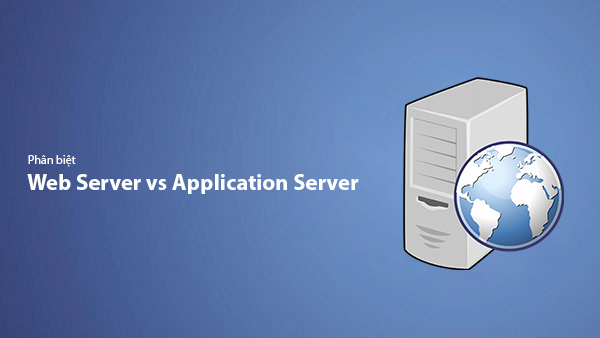Introduction to Apache Web Server – Features, Operation, and Usage
- Published on

- What is Apache Web Server?
- History and Development of Apache Web Server
- The Role of Apache in the Technology Ecosystem
- How Apache Works
- How Does Apache Process HTTP Requests?
- Multi-Processing Modules (MPM)
- How Apache Interacts with Other Applications
- Advantages and Disadvantages of Apache Web Server
- Advantages
- Disadvantages
- Comparing Apache with Other Web Servers
- Comparing Apache with Nginx
- Comparing Apache with Tomcat
- Comparing Apache with LiteSpeed, Microsoft IIS, and Other Web Servers
- Summary
- Real-World Applications of Apache Web Server
- Common Use Cases for Apache
- Major Organizations Using Apache
- Detailed Guide to Installing Apache
- Installation Guide for Apache on Different Operating Systems
- Basic Configuration Steps
- Important Notes When Using Apache Web Server
- Optimizing Apache Performance
- Securing Apache: Updates and Safe Configuration
- Conclusion
- Benefits of Apache Web Server
- When to Choose Apache?
What is Apache Web Server?
Apache Web Server, also known as Apache HTTP Server, is a popular open-source web server software widely used for serving web applications worldwide. Apache operates based on the HTTP protocol and is one of the top choices for deploying websites, ranging from personal projects to large-scale enterprises.
History and Development of Apache Web Server
Apache was developed by the Apache Software Foundation in 1995 and quickly became the most widely used web server on the Internet. Initially, Apache was built as an upgrade to NCSA HTTPd (National Center for Supercomputing Applications HTTP daemon). The name "Apache" originated from the phrase "a patchy server," symbolizing the continuous improvement and addition of features to the software.
Over time, Apache has grown significantly thanks to contributions from the open-source community, providing new features and security patches. To date, it remains a crucial pillar in the web technology sector.
Learn more: What is a Web Server – Principles and Popular Types.
The Role of Apache in the Technology Ecosystem
Apache plays an essential role in running websites and web applications. With its high customizability through modules (such as mod_ssl for SSL, mod_rewrite for URL rewriting), Apache supports various programming languages like PHP, Python, and Perl, making it suitable for projects of all sizes.
Key Roles of Apache:
- Hosting and delivering web content: Apache acts as a bridge between the server and the user's browser, processing requests and returning content (HTML, CSS, JavaScript, images).
- Flexible scalability: Apache's modules can be added or removed to meet specific needs.
- Seamless integration with other tools: Apache is often combined with MySQL and PHP, forming the LAMP stack (Linux, Apache, MySQL, PHP).
Additionally, Apache is crucial in providing web services for many large enterprises and complex applications, maintaining its competitive strength against rivals like Nginx and LiteSpeed.
Apache is not only a powerful tool for deploying web servers but also a flexible solution, enabling developers to easily expand and manage their web applications.
How Apache Works
Apache Web Server functions as an intermediary server, receiving requests from clients (web browsers) via the HTTP/HTTPS protocol, processing these requests, and returning appropriate content (such as HTML, CSS, or JSON) to users. This process is optimized to ensure stability, security, and the ability to handle high traffic volumes.
How Does Apache Process HTTP Requests?
Apache processes HTTP requests in the following steps:
- Receiving requests from clients: When users access a website, their browser sends an HTTP request to the server. Apache receives this request through default ports, usually port 80 (HTTP) or port 443 (HTTPS).
- Processing the request: Apache analyzes the request and routes it to the necessary resource (such as an HTML file, image, or PHP script) based on configurations in the
httpd.conffile or.htaccessfiles. - Returning the response: After processing, Apache sends an HTTP response to the client, including status codes (200, 404, 500...) and the requested content (HTML, JSON, resource files...).
Apache supports HTTP/1.1, HTTP/2, and can be extended to support new protocols like HTTP/3 through modules.
Learn more about HTTP: What is HTTP? How Does HTTP Work?.
Multi-Processing Modules (MPM)
One of Apache's strengths is its flexible process management through Multi-Processing Modules (MPM). Apache provides three main MPM types:
- Prefork MPM: Creates multiple child processes to handle each request individually. Suitable for applications requiring high stability but not optimal performance.
- Worker MPM: Combines processes and threads to handle multiple concurrent requests, ideal for high-performance applications.
- Event MPM: An improved version of Worker, offering better support for persistent connections like WebSocket or HTTP/2.
Depending on the system's needs, you can configure Apache to use the appropriate MPM to optimize performance.
How Apache Interacts with Other Applications
Apache functions as an intermediary tool, integrating with programming languages or databases through modules:
- PHP: Apache often integrates with PHP via the mod_php module, enabling dynamic web applications like WordPress and Laravel.
- Python/Perl: Modules like mod_wsgi or mod_perl are used to integrate Python or Perl applications.
- Databases: While Apache does not directly interact with databases, it is commonly used with database management systems like MySQL and PostgreSQL in complex web applications.
Additionally, Apache supports proxy modules like mod_proxy to connect to backend applications like Tomcat or Node.js, creating a flexible architecture.
Advantages and Disadvantages of Apache Web Server
Choosing Apache Web Server as the foundation for your website or web application depends on its strengths and limitations. Let's analyze them to better understand Apache's capabilities in today's technology environment.
Advantages
Apache is one of the most popular web servers today due to the following advantages:
Open Source and Free
- Apache is open-source software, meaning you can not only use it for free but also customize its source code to meet your needs.
- A large community contributes continuously, providing improvements and quick security patches.
High Compatibility
- Supports multiple operating systems, including Linux, Windows, and macOS, making it a flexible choice for many businesses.
- Compatible with various programming languages (PHP, Python, Perl...) and popular databases (MySQL, PostgreSQL).
Powerful Customization
- Apache has a diverse module system, allowing for easy function expansion, such as:
- mod_rewrite: URL restructuring.
- mod_ssl: Enabling HTTPS with SSL certificates.
- The
.htaccessconfiguration file helps users easily manage directory-specific settings.
Rich Documentation and Support
- A vast user community provides detailed documentation and guides, making it easy to find information when issues arise.
Scalability and Integration
- Easily integrates with backend systems like Tomcat, Node.js, or microservices-based applications.
Disadvantages
Despite its many advantages, Apache has some limitations to consider:
Lower Performance in High-Traffic Environments
- Apache is not as optimized as Nginx for handling large numbers of simultaneous connections, which can cause performance bottlenecks on high-traffic websites.
Complex Configuration
- Although
.htaccessprovides flexibility, detailed configuration in thehttpd.conffile or adding modules requires advanced knowledge.
Higher Resource Usage
- Apache consumes more RAM and CPU compared to some lightweight web servers like LiteSpeed or Nginx, especially when using the Prefork MPM model.
Limitations in Modern Architectures
- Apache does not perform as efficiently with event-driven architectures or asynchronous processing as Nginx or Node.js.
Apache remains a powerful choice due to its customizability and strong community support. However, for high-performance systems or resource-priority scenarios, combining or transitioning to other solutions like Nginx may be a reasonable option.
Comparing Apache with Other Web Servers
In the world of web servers, Apache is not the only choice. Other web servers like Nginx, Tomcat, and LiteSpeed are also strong competitors. Understanding their differences will help you make the right decision for your project.
Comparing Apache with Nginx
Nginx is one of Apache's biggest competitors, known for its superior concurrency handling and high performance. Below is a key comparison between the two platforms:
| Criteria | Apache | Nginx |
|---|---|---|
| Architecture | Process-driven | Event-driven |
| Performance | Good for small and medium websites | Optimized for high traffic and heavy loads |
| Concurrency Handling | Limited when managing multiple connections | Supports thousands of simultaneous connections |
| Customization | High, thanks to | More limited |
| PHP Integration | Direct support with mod_php | Requires FastCGI |
Learn more: What is Nginx? Advantages, Disadvantages, and How It Works.
When to Choose Apache and When to Choose Nginx?
- Choose Apache if you need flexible customization, support for numerous modules, and efficient PHP-based application handling.
- Choose Nginx if you need high performance, large traffic handling, or a reverse proxy.
Comparing Apache with Tomcat
Tomcat is a specialized web server typically used for deploying Java applications. Below are the fundamental differences:
| Criteria | Apache | Tomcat |
|---|---|---|
| Primary Language | PHP, Python, Perl, any language | Java |
| Main Purpose | Serving static and dynamic content | Running Java web applications (Servlet, JSP) |
| Performance | High for static content | Optimized for complex Java applications |
When to Choose Tomcat?
- Tomcat is an excellent choice if you are deploying Java EE-based applications. However, you can combine Apache with Tomcat to efficiently handle both static and dynamic content.
Comparing Apache with LiteSpeed, Microsoft IIS, and Other Web Servers
Apache vs. LiteSpeed
- LiteSpeed stands out with higher performance, particularly for handling PHP applications through LSAPI technology.
- However, LiteSpeed is not free, which makes Apache a more popular choice for small businesses and personal projects.
Apache vs. Microsoft IIS
- Microsoft IIS is designed specifically for the Windows ecosystem and integrates seamlessly with Microsoft products like ASP.NET.
- Apache, on the other hand, excels with cross-platform compatibility and extensive community support.
Apache vs. Other Web Servers
- Apache is often used as a general-purpose tool suitable for most projects. In contrast, web servers like Caddy or HAProxy tend to focus on specific needs (e.g., load balancing or automatic HTTPS).
Summary
Each web server has its strengths and weaknesses. The best choice depends on your specific requirements:
- Apache is powerful and highly customizable, making it suitable for most web applications.
- Nginx and LiteSpeed are better suited for high-traffic systems.
- Tomcat is ideal for Java applications.
Real-World Applications of Apache Web Server
Apache Web Server is not only a powerful tool for managing static and dynamic websites but also an integral part of large and complex web systems. Below are its real-world applications in the tech industry today.
Common Use Cases for Apache
Personal Websites and Blogs
Apache is an ideal choice for personal websites or blogs thanks to its support for PHP, enabling the deployment of popular platforms like WordPress, Joomla, or Drupal. With flexible customization through .htaccess, Apache offers convenience for managing URLs or configuring security for small websites.
Example: A personal user can run a WordPress blog on a small Linux server powered by Apache.
Small and Medium Businesses
Small and medium-sized businesses often use Apache to deploy websites showcasing products or services. Apache’s easy scalability helps these businesses manage content and serve customers effectively.
Web Applications
Apache is widely used in complex web applications, particularly in the LAMP stack (Linux, Apache, MySQL, PHP/Python) environments. For instance, enterprise management systems (ERP, CRM) often rely on Apache for stable performance and ease of customization.
Major Organizations Using Apache
Tech Corporations
Many large tech corporations use Apache as their web server due to its flexibility and high compatibility with complex applications. Large e-commerce platforms often deploy Apache in combination with technologies like Reverse Proxy or Load Balancing.
Government Organizations
Apache is trusted by many government agencies for its high-security features and ability to handle large amounts of data. Supported by a robust open-source community, Apache is regularly updated to meet strict security requirements.
Educational Institutions
Universities and educational organizations often use Apache to run online learning systems (LMS - Learning Management Systems) such as Moodle.
Apache Web Server is suitable not only for small or personal projects but also plays a crucial role in the complex systems of large organizations. Supported by the open-source community, Apache remains a popular and reliable choice for developers worldwide.
Detailed Guide to Installing Apache
Installing Apache Web Server is straightforward and can be done on multiple operating systems. Below is a step-by-step guide on setting up Apache on Linux, Windows, and macOS, along with basic configuration instructions.
Installation Guide for Apache on Different Operating Systems
Installing Apache on Linux (Ubuntu/Debian)
Apache is integrated into the software repositories of most Linux distributions. You can install it with just a few commands:
sudo apt update
sudo apt install apache2
-
After installation, start Apache with the command:
sudo systemctl start apache2 -
Ensure Apache starts automatically with the system:
sudo systemctl enable apache2 -
Check its status:
sudo systemctl status apache2 -
Access
http://<server-ip>in your browser to verify the installation. If you see the "Apache2 Ubuntu Default Page", the installation was successful.
Installing Apache on Windows
On Windows, you can install Apache using the XAMPP package, which integrates Apache, MySQL, and PHP.
- Step 1: Download XAMPP from the official site: https://www.apachefriends.org/.
- Step 2: Install and select Apache from the list of modules.
- Step 3: After installation, open the XAMPP Control Panel and click Start next to Apache.
- Step 4: Access
http://localhostto verify.
Installing Apache on macOS
On macOS, Apache is pre-installed and can be enabled as follows:
-
Check the Apache version:
apachectl -v -
Start Apache:
sudo apachectl start -
Visit
http://localhostto confirm Apache is running.
To install the latest version, you can use Homebrew:
brew install httpd
brew services start httpd
Basic Configuration Steps
After installation, you may need to configure Apache to suit your requirements:
Creating Virtual Hosts
Virtual Hosts allow Apache to serve multiple websites from the same server:
-
Open the configuration file:
sudo nano /etc/apache2/sites-available/000-default.conf -
Modify it to point to your website's directory:
<VirtualHost *:80> ServerName example.com DocumentRoot /var/www/example ErrorLog ${APACHE_LOG_DIR}/error.log CustomLog ${APACHE_LOG_DIR}/access.log combined </VirtualHost> -
Enable the Virtual Host:
sudo a2ensite 000-default.conf sudo systemctl reload apache2
Enabling SSL
Set up HTTPS for your website with an SSL certificate:
-
Install the SSL module:
sudo a2enmod ssl sudo systemctl restart apache2 -
Create a self-signed SSL certificate:
sudo openssl req -x509 -nodes -days 365 -newkey rsa:2048 -keyout /etc/ssl/private/apache-selfsigned.key -out /etc/ssl/certs/apache-selfsigned.crt -
Update the Virtual Host configuration to support HTTPS:
<VirtualHost *:443> ServerName example.com DocumentRoot /var/www/example SSLEngine on SSLCertificateFile /etc/ssl/certs/apache-selfsigned.crt SSLCertificateKeyFile /etc/ssl/private/apache-selfsigned.key </VirtualHost>
Installing and configuring Apache is straightforward and flexible, meeting a wide range of needs from basic to advanced. To ensure performance and security, regularly update and optimize Apache as required.
Important Notes When Using Apache Web Server
While Apache Web Server is a powerful and flexible tool, effectively using it requires attention to performance, security, and scalability. Below are some key considerations for deploying Apache in real-world environments.
Optimizing Apache Performance
Apache's performance can be affected by improper configuration or high system load. To improve it, you can take the following steps:
Choose the Appropriate MPM
Apache supports three types of Multi-Processing Modules (MPM):
- Prefork: Suitable for PHP applications but resource-intensive.
- Worker: Handles multiple concurrent connections with higher efficiency.
- Event: Optimized for persistent connections (e.g., HTTP/2).
Configure MPM in the apache2.conf file:
<IfModule mpm_event_module>
StartServers 2
MinSpareThreads 25
MaxSpareThreads 75
ThreadLimit 64
ThreadsPerChild 25
MaxRequestWorkers 150
MaxConnectionsPerChild 0
</IfModule>
Enable Gzip Compression
Compressing data reduces the file size sent to the client, improving page load speed:
sudo a2enmod deflate
Add the following to the .htaccess file:
<IfModule mod_deflate.c>
AddOutputFilterByType DEFLATE text/html text/plain text/xml
AddOutputFilterByType DEFLATE text/css text/javascript application/javascript
</IfModule>
Optimize Caching
Enable mod_cache to temporarily store static content, reducing server load:
sudo a2enmod cache cache_disk
Securing Apache: Updates and Safe Configuration
Security is crucial for any web server, and Apache is no exception. Here are essential steps to protect your system:
Keep Apache Updated
Regularly update Apache to patch security vulnerabilities:
sudo apt update
sudo apt upgrade apache2
Hide Sensitive Information
By default, Apache displays its version and running modules, which hackers can exploit. Disable this by editing the apache2.conf file:
ServerSignature Off
ServerTokens Prod
Enable HTTPS
Use SSL/TLS to encrypt data between the server and the browser:
- Install SSL certificates from trusted providers or use Let's Encrypt.
Restrict Access Rights
Use .htaccess to deny access to critical files:
<Files ".ht*">
Require all denied
</Files>
Prevent DDoS Attacks
Install the mod_evasive module to protect the server from DDoS attacks:
sudo apt install libapache2-mod-evasive
Add the following configuration for protection:
<IfModule mod_evasive20.c>
DOSHashTableSize 3097
DOSPageCount 20
DOSSiteCount 100
DOSBlockingPeriod 10
</IfModule>
Optimizing and securing Apache not only enhances performance but also ensures the safety of your system. Regularly inspect and update configurations to fully leverage Apache Web Server's capabilities for deploying and managing web applications.
Conclusion
Apache Web Server has proven its position in the web technology domain due to its flexibility, strong community support, and high customizability. With its long development history, Apache remains a cornerstone for delivering web services for organizations, businesses, and individuals.
Benefits of Apache Web Server
- Widely Used and Reliable: As one of the most widely used web servers, Apache provides a trusted solution for projects of all sizes.
- Open Source: Apache’s flexibility allows users to customize it as needed while benefiting from free resources provided by the community.
- Diverse Integration: Easily integrates with other technologies like MySQL, PHP, Python, or backend tools like Tomcat.
When to Choose Apache?
Apache is the right choice if you need a web server that:
- Is Easy to Configure and Manage: Apache supports
.htaccessfiles and a variety of extension modules. - Is Cross-Platform Compatible: Works seamlessly on Linux, Windows, and macOS.
- Fits Small and Medium Applications: Small businesses or personal websites can efficiently utilize Apache’s features.
For scenarios requiring extremely high performance or handling millions of simultaneous connections, consider combining Apache with solutions like Nginx or alternative web servers like LiteSpeed.
Latest Posts

Lesson 26. How to Use break, continue, and return in Java | Learn Java Basics
A guide on how to use break, continue, and return statements in Java to control loops and program execution flow effectively.

Lesson 25. The do-while Loop in Java | Learn Basic Java
A detailed guide on the do-while loop in Java, including syntax, usage, examples, and comparison with the while loop.

Lesson 24. How to Convert Decimal to Binary in Java | Learn Basic Java
A guide on how to convert numbers from the decimal system to the binary system in Java using different methods, with illustrative examples.

Lesson 23. How to Use the While Loop in Java | Learn Java Basics
Learn how to use the while loop in Java with syntax, real-world examples, and practical applications in Java programming.
Related Posts

What is .htaccess? Guide to Editing and Configuring .htaccess
Learn about the .htaccess file, its functions, and how to edit and configure .htaccess to optimize security, SEO, and website performance.

What is DNS? The Mechanism of Domain Name Resolution System
Learn about DNS, the mechanism of the domain name resolution system, and the important role of DNS in maintaining website operations.

What is a Dedicated Server? A Guide to Choosing the Right Dedicated Server
Learn about Dedicated Servers, the benefits of using a dedicated server, and how to choose the right one for your needs.

Difference Between Web Server and Application Server
Learn the difference between Web Server and Application Server – two essential servers in web technology systems. Explore their structure, functions, how they work, and when to use each type of server.

